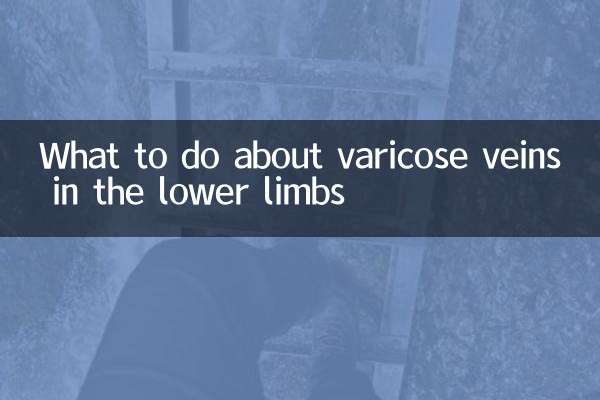What is the cause of lumbar spondylosis?
In recent years, lumbar spondylolisthesis has become a health problem that many people are concerned about, especially people who sit for long periods of time and have poor posture are more likely to suffer from such symptoms. This article will introduce in detail the definition, causes, symptoms, treatment methods and preventive measures of lumbar spondylolisthesis to help everyone better understand and deal with this problem.
1. What is lumbar spondylosis?

Lumbar spondylosis refers to a pathological condition in which the annulus fibrosus of the lumbar intervertebral disc is partially ruptured, causing the nucleus pulposus to protrude outward, but has not completely broken through the annulus fibrosus. It is the early stage of lumbar disc herniation. If not intervened in time, it may develop into a more serious lumbar disc herniation.
| Terminology | definition |
|---|---|
| Lumbar spondylolisthesis | The annulus fibrosus is partially ruptured, and the nucleus pulposus protrudes outward but is not completely broken through. |
| Lumbar disc herniation | The annulus fibrosus is completely ruptured and the nucleus pulposus breaks through the annulus fibrosus. |
2. Causes of lumbar spondylosis
The occurrence of lumbar spondylolisthesis is related to many factors, including:
| Cause | Specific instructions |
|---|---|
| Long-term bad posture | Sitting for long periods of time, hunching over, etc. increase pressure on the lumbar spine |
| age factor | People over 30 years old have increased risk of intervertebral disc degeneration |
| trauma | An acute sprain or impact may cause annulus fibrosus injury |
| genetic factors | People with a family history of lumbar spondylosis are at higher risk |
| Obesity | Excess weight increases the burden on the lumbar spine |
3. Typical symptoms of lumbar spondylosis
Symptoms of lumbar spondylolisthesis vary from person to person. Common manifestations include:
| Symptom type | Specific performance |
|---|---|
| lower back pain | Persistent dull pain or intermittent stabbing pain |
| Radiating pain in lower limbs | Pain radiating to the buttocks and back of the thigh |
| Paresthesia | Numbness and tingling in lower limbs |
| Restricted activities | Restricted movements such as bending and turning |
| Stiffness in the morning | Obvious stiffness in waist when getting up in the morning |
4. Diagnosis and examination methods
The diagnosis of lumbar spondylolisthesis requires a combination of clinical symptoms and imaging examinations:
| Check method | Features |
|---|---|
| X-ray examination | Observe the bone structure, the intervertebral disc cannot be directly displayed |
| CT scan | Can show changes in intervertebral disc morphology |
| MRI examination | The most accurate inspection method with clear visualization of soft tissue |
| Physical examination | Special examinations such as straight leg raising test |
5. Treatment methods
The treatment of lumbar spondylosis should adopt comprehensive measures:
| Treatment | Specific content |
|---|---|
| Conservative treatment | Bed rest, medication, physical therapy |
| exercise therapy | Core muscle training, swimming and other low-impact exercises |
| Traditional Chinese Medicine Treatment | Acupuncture, massage, cupping, etc. |
| surgical treatment | Suitable for severe cases, such as minimally invasive transforaminal endoscopic surgery |
6. Preventive measures
To prevent lumbar spondylolisthesis, you should start with daily habits:
| Precautions | Specific methods |
|---|---|
| correct posture | Keep your spine in a neutral position and avoid bending over for long periods of time |
| reasonable exercise | Strengthen the lower back muscles, such as plank support |
| control weight | Control your BMI between 18.5-23.9 |
| Use your waist scientifically | When lifting heavy objects, bend your knees and squat to avoid straining your waist. |
| Regular inspection | Regular spine check-ups are recommended for people over 40 years old |
7. Precautions during the recovery period
For patients who have already developed lumbar spondylolisthesis, special attention should be paid to the following during the recovery period:
| Things to note | Detailed description |
|---|---|
| Avoid sitting for long periods of time | Get up and move around for 5-10 minutes every hour |
| Sleeping position adjustment | Choose a medium-firm mattress and place pillows between your legs when sleeping on your side |
| step by step | Rehabilitation training should gradually increase intensity |
| psychological adjustment | Stay positive and avoid anxiety |
| Regular review | Follow doctor’s instructions for regular review and assessment of recovery status |
Although lumbar spondylolisthesis is common, through scientific understanding and correct prevention and treatment methods, symptoms can be effectively controlled and further deterioration can be prevented. If you have relevant symptoms, it is recommended to seek medical treatment in time and undergo treatment and recovery under the guidance of a professional doctor.

check the details

check the details